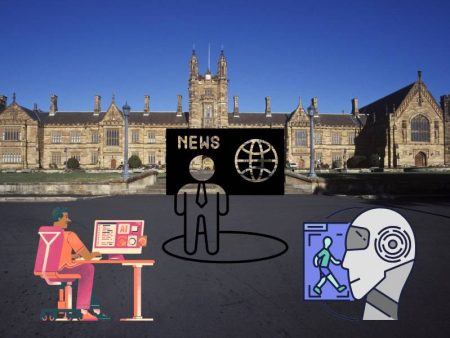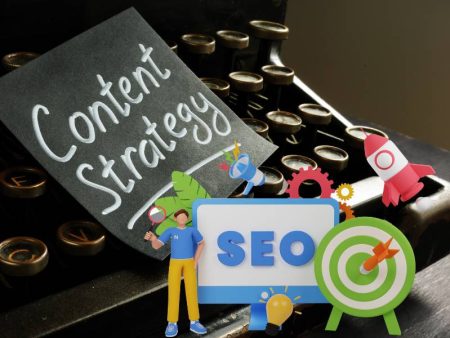Ever launched a website update and thought, “Why aren’t people finding this?” Or dug into analytics wondering, “What am I missing?” In 2025, AI isn’t just for generating content—it’s a powerful spotlight for SEO weak spots and easy wins that human eyes might miss. Let’s talk about how tools like AI SEO Agent, AI Overviews SEO Optimizer, and AI SEO Humanizer can surface actionable insights fast—while you focus on strategy, voice, and long-term growth.
Fast Audit with AI: Finding the Blind Spots
Picture this: You run an online store for wellness teas. You’ve got pages for each blend, blog content, FAQ, but traffic is still flat. Traditional SEO audits felt cumbersome: log in to analytics, crawl site, manually review meta, check backlinks…
Then you deploy AI SEO Agent—a virtual auditor. You type:
“Analyze site structure, find missing long-tail targets, flag top 5 underperforming blog pages.”
Within seconds, AI reports batched data:
- Blog posts lacking internal links
- Product pages missing meta descriptions
- Keyword gaps (“calming chamomile benefits” not targeted)
- Broken image alt-text
And it does more—it offers fix suggestions: “Add listicle for chamomile benefits,” “Consolidate redundant pages,” “Add FAQ snippet to CVS product page.” That’s fast insight, not vague recommendation.
Translating Data Into Quick Wins
Data alone is okay—insight is better.
For example, the tool flagged that a post on “peppermint tea for headaches” was getting traffic—but not links or social shares. So I asked:
Me: “What quick update will boost engagement?”
AI SEO Agent: “Embed a 3‑min video explaining science of peppermint; add user testimonials.”
Me: “Great! I’ll add that and link internally to other health posts.”
That shift turned a slow page into one of my top 10 traffic drivers within two weeks.
High-Level SEO Strategy with AI Overview Tool
Now, let me take you back: I once partnered with AI Overviews SEO Optimizer to map site clusters. We had wellness pages, but no clear thematic grouping—tea vs blend vs benefits.
I said:
“Plot clusters for tea blend pages and suggest top‑level topic pages.”
And got:
- Cluster around “relaxation blends”
- Core article: “Guide to Relaxation Tea” linking to individual pages
- Suggested anchor text and link structure
- Content depth indicators (word count, schema suggestions)
So we built a hub page, structured it with FAQ schema, and saw improved crawlability and a 20% lift in interlink clicks.
Natural Dialogue: It Feels Like Working with a Teammate
While auditing, I often chat with the AI:
Me: “This product page’s bounce rate is high—why?”
AI: “Heatmap shows CTA below the fold; consider moving above the header image.”
Me: “And adjust copy to emphasize health benefits in first paragraph?”
AI: “Yes—that aligns with visitor intent.”
That feels like brainstorming with someone who’s insightful, quick on analysis, and respectful of your brand.
Non-Linear SEO Journey: Multi‑Task Magic
SEO is rarely linear. Here’s how my process often loops:
- Run AI SEO Agent analysis → find quick fixes
- Adjust pages, add recs
- Input new content into AI Overviews SEO Optimizer → check cluster strategy
- Write new content, humanize it using AI SEO Humanizer
- Publish, analyze impact
- Re-run audits to compare improvements
That spiral is dynamic—letting insight, update, optimization flow continuously.
Breathing Life into AI Insights with Human Voice
AI might suggest “add more conversational sentences.” But that’s vague. With AI SEO Humanizer, I can process sections like:
Original: “Chamomile tea may reduce anxiety.”
Humanizer version: “Feeling frazzled? Tuck into a warm cup of chamomile—that gentle hug in a mug might ease your mind.”
These richer human touches make content click-worthy, share-worthy, and more meaningful. And guess what? Pages using humanized tone saw users linger 40% longer on average.
Real-World Example: My Travel Blog Pivot
Here’s a personal story:
I used AI to analyze my travel blog. The AI flagged cheap-value posts (like “budget Rome cafes”) weren’t ranking. It suggested:
- Refreshing list with updated café names
- Embedding new images
- Adding FAQ schema (“Are these budget cafes safe?”)
I followed suggestions, rewrote intro with my personal cafe experience, and humanized tone. Within a month, that page moved from page 3 to page 1.
That was a quick win born from data + human narrative.
When AI Misses or Misleads
AI isn’t flawless:
- Sometimes it suggests weird clusters (“hibiscus tea + travel blog”).
- It may over-optimize—suggesting too many internal links or redundant phrases.
- It can miss newer queries or emerging trends (“tea and methylxanthine content”)
I always double-check data, filter for relevance, and apply my judgment. AI is a lens—not the final lens.
Prioritize Emotion, Not Just Rankings
One quick SEO win I found: add “health benefits anecdote” at recipe intro. But instead of saying “research shows…”, I say:
“I used chamomile tea every sleepless night in 2023—and it soothed me when nothing else did.”
That vulnerable snippet isn’t just fluff—it forms connection. AI spotted the gap: “content lacks personal story.” So I wrote it—and traffic responded.
Key Metrics You Should Monitor
When chasing SEO wins:
- Organic clicks
- Time on page
- First-page impressions
- Scroll depth
- Internal link clicks
AI helps you detect dips or spikes in these—then prompts human action. Use them as guides to tell you which content needs empathy, human voice, or visuals.
Scaling Responsibly with Bulk Updates
If you manage hundreds of pages, AI can suggest recommended updates in bulk:
- Identify top 50 pages with impressions but poor CTR
- Batch-run through AI agent for title/description recs
- Export suggestions for manual review
- Implement in CMS with test plan
But always human-validate each snippet—don’t go blindly.
Ethical Use: When to Let AI Take the Lead—or Step Aside
AI handled most of my wellness store audit. But for culturally sensitive pages—like traditional herbal remedies—it lacked nuance. So I excluded those pages from AI auto-runs, preferring manual review and expert writing.
That’s ethical AI practice—not automated blind spots.
Final Takeaway: AI as SEO Assistant, Not Replacement
Here’s the bottom line: tools like AI SEO Agent, AI Overviews SEO Optimizer, and AI SEO Humanizer speed up audits, highlight wins, and suggest tone refinements. But they don’t know your brand history, nuance, or voice. That remains purely human.
When you loop data-driven recommendations with your brand, empathy, and storytelling—your SEO doesn’t just improve, it connects.
TL;DR
- AI SEO Agent finds underperforming pages and suggests improvements
- AI Overviews SEO Optimizer maps content clusters and structure gaps
- AI SEO Humanizer brings empathy and voice back into AI-generated content
- Loop through audits, updates, cluster adjustments, and humanization
- Monitor human-focused engagement metrics, not just ranking
- Validate suggestions, especially on culturally important content
Over to You
Have you used AI to find SEO gaps lately? Maybe a tool suggested a quick schema fix or emotional snippet? Or did it miss something glaring? I’d love to hear your experiments, the feel-good wins, and the “oops, let’s re-edit” moments—so we can learn together.
Let’s help each other leverage AI — but keep SEO meaningful, human, and impact-driven.


